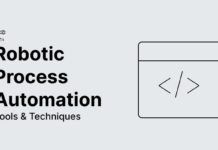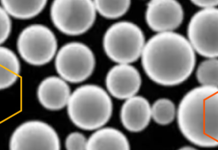Computer-aided design or CAD is among the most-employed designing platforms that serve several industries. Regardless of domain and size, companies are using CAD advancements to fulfil their bespoke design requirements. It is a performance-driven upgrade over conventional designing methodologies.
CAD is helping engineers to challenge their existing design curbs and contribute towards better innovation and optimized solutions. CAD is not new; however, it is also getting highly-advanced and promising with constant digital transformation disruption.
Be it the automotive, aerospace, construction, or manufacturing industry, every domain demands improved CAD solutions to take the lead. Before you dive into the latest cad technology trends of 2021 and beyond, check out some fundamental uses of CAD.
CAD Technology Uses & Applications
Engineers leverage this technology to draft several complex CAD drawings and designs that are intricate & time-consuming with the traditional approach. Some of the fundamental applications of CAD technology involves:
- Engineers can create highly-detailed 2d or 3d designs of mechanical components or architectural blocks. CAD makes design visualization more real-to-life as compared to traditional methods.
- CAD is also instrumental in conducting various strength and dynamic analysis tests of product design or conceptual design.
- Rendering of interior and exterior design becomes seamless and error-free with CAD. It let architects generate accurate environmental impact reports for design improvisation
Latest CAD Modelling Trends of 2021
With endless design creation and improvisation possibilities, it’s almost impossible to challenge this technology’s capabilities. On this note, check out the booming CAD trends that help industries do more in less time.
Better Design Simulation
With the advancement of technology in every aspect, the CAD design simulation is also getting more improved and value-driven. Simulation is a critical requirement regardless of industries and organization size. With in-depth geometrical simulation, engineers can analyze, improvise, update the design at an earlier design phase.
The robust simulation will become an inevitable part of an engineer’s workflow to deliver a high-quality end-product design. This pre-production design visualization will allow companies to save time as well as operational cost. Product designers and architects should not need to toggle between multiple wireframes or illustrations while working on the final product. With this CAD trend, teams working remotely amid this COVID-19 outbreak can improve their productivity.
CAD Software& Artificial Intelligence
Breakthrough happens when two or more technologies support and work with each other to achieve better output. It goes the same with CAD technology and artificial intelligence. The design industry is witnessing the generative design approach’s boom, and in 2021, we will see more adaptations of this approach.
Generative designing is all about enhanced co-designing with robust artificial intelligence support. In simple terms, generative design let engineers and product designers create thousands of design combinations. Creators only need to define the design problem supported by basic parameters to generate cutting-edge solutions.
Once individuals enter parameters like weight, dimensions, material option, CAD with AI can curate more improved designs. With this advancement, it becomes easy to gauge the early design geometries and pace up the product manufacturing. The integration of CAD, AI, and cloud computing is the latest trend of 2021 and beyond for product designing.
Model-Based Definition
Model-based design presentations are faster to illustrate, and multiple teams of the same organization can leverage them in their work. Instead of relying on traditional methods, the model-based definition trend will go mainstream in 2021 and beyond.
More companies will focus on 3d cad models to boost their product development lifecycle. When organizations have a robust digital product model, teams can function better because of seamless communication. By utilizing a model-based definition approach, engineers can eliminate all possible design redundancies and inconsistencies caused in conventional methods.
With 3d CAD drafting services, companies need to deal with a shorter feedback loop which results in better product development. Once organizations adopt this approach, the production scalability also improves along with long-term cost-optimization.
Improved Mobility in CAD
As more people are working from remote locations, mobility has become more critical than ever. Flexibility in technology improves productivity and reduces operational delays. Mobile-driven CAD solutions will become the next paradigm shift for designers and product managers. With more users joining the mobility revolution and working on portable devices, the percentage of remote CAD users will increase.
Many CAD developers are already working from their portable devices, and the number will surge in 2021 and beyond. CAD companies are also working closely towards making the full-fledged designing system optimized for mobile devices. Be it the automotive or consumer industry, mobility solutions are the need of the hour, and we will see more flexible CAD platforms supporting this trend. CAD advancements are going to improve every design aspect even more in the upcoming time. These top CAD trends of 2021 are promising, and we will soon witness more complex implementations inspired by them. More companies will start integrating these CAD advancements in their operations to upgrade the overall product lifecycle.







